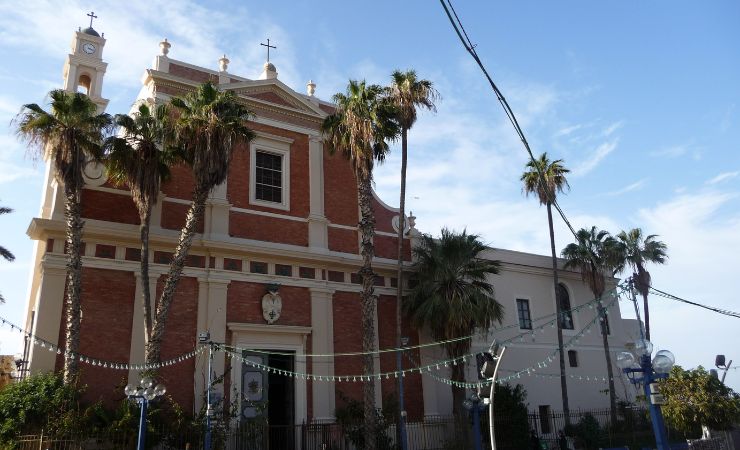Unveiling the Mystique of St. Peter's Church in Jaffa
St. Peter’s Church, stands proud in a notable landmark reflecting Jaffa’s enduring heritage. Unlike most churches, St. Peter’s Church faces west, towards the sea. This orientation is deeply symbolic, relates journey to Rome in the west. This feature adds a layer of spiritual meaning to the church’s physical structure, connecting its architectural design with the religious narratives it commemorates.

Location
St. Peter’s Church, stands proud in a notable landmark reflecting Jaffa’s enduring heritage.
Biblical context
The resurrections of Tabitha
The site of St. Peter’s Church in Jaffa is tied to a significant biblical story involving Saint Peter. According to the Acts of the Apostles in the New Testament, Saint Peter performed a miracle here by resurrecting Tabitha (also known as Dorcas), a devoted follower of Christ. Tabitha had fallen ill and died, and upon Peter’s arrival, he prayed earnestly and instructed her to rise, which led to her coming back to life. This miraculous event had a profound impact, leading many in Jaffa to embrace faith in Christ.
Peter sent them all out of the room; then he got down on his knees and prayed. Turning toward the dead woman, he said, ‘Tabitha, get up.’ She opened her eyes, and seeing Peter she sat up. He took her by the hand and helped her to her feet.
Peter’s Vision
Additionally, while staying with Simon the Tanner in Jaffa, Peter received a vision from God, which played a pivotal role in shaping the Christian doctrine. In this vision, God declared all foods clean, symbolizing that the message of Christianity was for all people, Jews and Gentiles alike. This vision marked a significant turning point in the early Christian church, emphasizing inclusivity and universal salvation.
He saw heaven opened and something like a large sheet being let down to earth by its four corners. It contained all kinds of four-footed animals, as well as reptiles and birds. Then a voice told him, ‘Get up, Peter. Kill and eat.’ ‘Surely not, Lord!’ Peter replied. ‘I have never eaten anything impure or unclean.’ The voice spoke to him a second time, ‘Do not call anything impure that God has made clean.’ This happened three times, and immediately the sheet was taken back to heaven.”



The Church's History
St. Peter’s Church was initially built over a medieval citadel established by Frederick I and restored by Louis IX of France during the 7th Crusade in the 13th century. This church was destroyed by the Mamluks in 1264. Part of one of the round towers from Louis IX survived and is incorporated in the current church. In 1654, monks built the new church to serve as a pilgrimage lodge. This church faced destruction twice in the late 18th century and had to be rebuilt each time. The current structure built by the Catholic Church (Franciscans), which you can see today, was constructed between 1888 and 1894, with a significant renovation in 1903.
Dominating the skyline of Old Jaffa, the church’s tall, brick facade, complemented by a towering bell tower, marks it as the single largest and most distinctive building in the area.
The facade of St. Peter’s Church mirrors the design of contemporary Spanish churches found in Latin America. It is characterized by its charming red brick, offers a striking contrast to the stone-built structures typical of Jaffa. This connection to the Spanish Empire is further underscored by the stained glass windows inside the church, which predominantly depict Spanish saints.
Nearby Sites
- Jaffa Flea Market – A bustling market where you can find a mix of antiques, handmade crafts, and local food.
- Jaffa Clock Tower – A historic clock tower located in the heart of Jaffa.
- House of Simon the Tanner – A site of biblical significance, offering insight into ancient and religious history.
- Jaffa’s Harbor – A picturesque harbor with a long history, offering scenic views and dining options.



